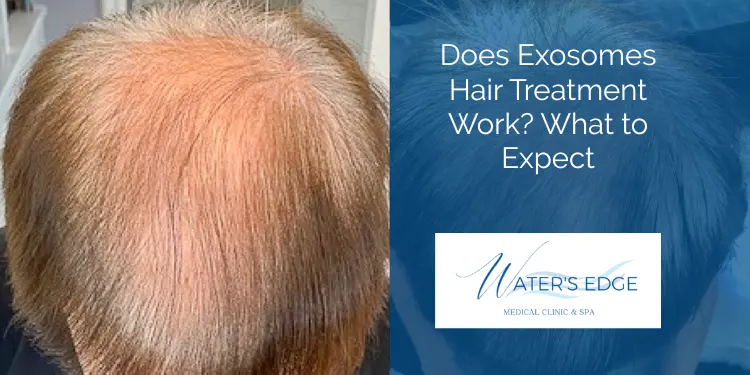Hair loss can be frustrating, and many people are looking for effective treatments. One of the newer options gaining attention is exosome hair therapy. This treatment promises to stimulate hair growth using tiny particles called exosomes, which are derived from stem cells. But the big question remains: does exosomes hair treatment work? In this article, we’ll explore what exosomes are, how the treatment is performed, the scientific evidence behind it, what results you can expect, and whether it might be the right choice for you.
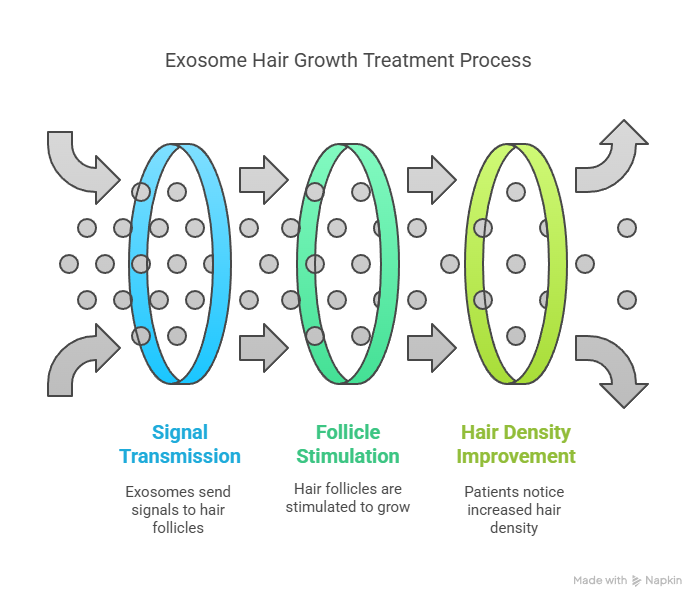
Key Takeaways
- Exosomes are tiny particles that help stimulate hair growth by sending signals to hair follicles.
- The treatment is minimally invasive and involves injections into the scalp, with little to no downtime.
- Results can vary, but many patients start to see improvement in hair density within a few months.
Understanding Exosomes: What Are They and How Do They Help Hair?
Exosomes are getting a lot of buzz in the hair restoration world, and for good reason. But what are exosomes for hair loss, really? They’re basically tiny packages that cells use to communicate with each other. Think of them as little messengers carrying important information.
Exosomes contain growth factors and other materials that can trigger regeneration in targeted areas. They’re like a wake-up call for your hair follicles, telling them to get back to work.
Here’s a simple breakdown of how they help:
- Repairing damaged hair follicles.
- Stimulating hair production.
- Promoting overall scalp health.
Exosomes are derived from stem cells and not synthetic materials, the risk of adverse reactions is significantly reduced.
So, do exosomes work for hair loss? The research is still fairly new, but early studies show a lot of promise. Researchers are exploring their potential to treat different types of hair loss, including androgenetic alopecia. If you’re considering PRP therapy, understanding exosomes is a good first step.
How Exosomes Hair Treatment Is Performed
The exosomes hair treatment process is pretty straightforward, but it’s good to know what to expect. Exosomes are usually sourced from human donor tissue.. These are processed in labs under strict conditions and guidelines set by the FDA. Your clinic gets these treatments pre-packaged and frozen, thawing them right before use.
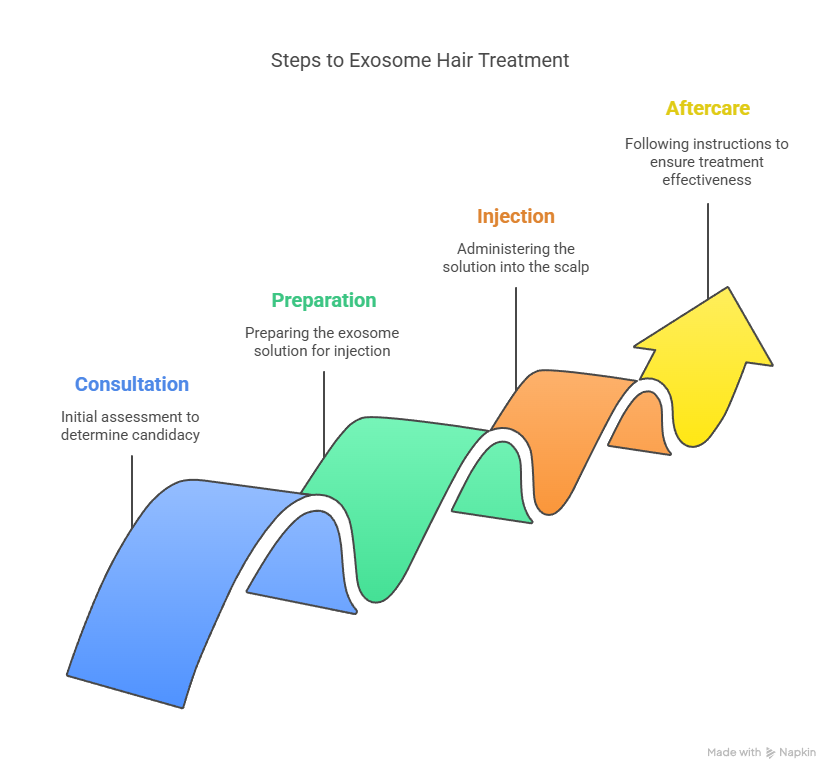
Here’s a general idea of what happens:
- Consultation: First, there’s a consultation to see if you’re a good candidate. They’ll check your hair loss and medical history.
- Preparation: The exosome solution is prepped. It comes from mesenchymal stem cells, processed to be safe and effective.
- Injection: Using fine needles, the solution is injected into your scalp where you’re losing hair. They aim for good coverage.
- Aftercare: You’ll get instructions, like avoiding certain hair products for a bit, to let the exosomes do their thing.
The technician will explain everything and might offer local anesthesia to keep you comfortable. After the injections, they’ll give you aftercare tips, like not washing your hair that day. Looking for an exosomes treatment for hair loss?
It’s all about getting those exosomes where they need to be to help your hair follicles. If you are looking for “exosomes hair treatment near me”, make sure to do your research!
Scientific Evidence: Does Exosomes Hair Treatment Work?
So, does exosome hair treatment actually work? That’s the big question, right? It’s still pretty early days for the research, and not a ton of trials have been done yet. Plus, it’s tricky to say for sure how well it works overall, because the results can be all over the place. It really depends on where the exosomes come from, how they’re processed, and how each study is set up.
But, the studies that have been done in living subjects are looking promising. Here’s a quick rundown of some interesting findings:
- Studies have shown that exosome therapy can help improve hair thickness and density in people experiencing androgenetic alopecia. That’s the most common type of hair loss, so that’s a good sign.
- There’s some evidence from animal trials that exosome hair loss therapy might help reduce scalp inflammation, regrow hair, and wake up those sleepy hair follicles in alopecia areata. But, we need human trials to confirm this.
- Patients with trichorrhexis nodosa (a condition where your hair breaks easily) saw less breakage, some hair shaft restoration, and better hair quality after exosome treatment.
Exosomes contain growth factors that promote tissue regeneration. They can help repair hair follicles affected by miniaturization or damaged by inflammation. Exosomes also help protect cells from damage and improve their signaling efficiency.
It’s worth keeping an eye on this area. The science is still developing, but the initial results are encouraging. It seems like exosome hair treatments could be a real option for some people in the future.
Expected Results and Timeline for Hair Regrowth
Okay, so you’ve decided to try exosome hair therapy. What can you realistically expect, and when? It’s not an overnight miracle, but here’s a general idea of what to look for.
Initial Signs of Improvement
Don’t expect a full head of hair in a week. Some people report seeing subtle changes relatively early. This might include a decrease in shedding or a slight improvement in the texture of existing hair. These early signs suggest the exosomes are starting to work at the follicular level. It’s like planting a seed – you don’t see a tree immediately, but you might notice a sprout.
The Growth Phase
Significant hair regrowth usually becomes noticeable after a few months. Most patients start to see real changes around the three-to-six-month mark. This is when you might observe new hair follicle health emerging and existing hair becoming thicker. Remember, everyone’s different, so this timeline can vary.
Full Results and Maintenance
Full results from exosome hair treatment typically appear within six to twelve months. At this point, you should have a much better idea of the overall effectiveness of the treatment. To maintain these results, occasional touch-up sessions may be recommended. Your provider will monitor your results and create a custom maintenance plan just for you. Think of it like watering a plant – it needs ongoing care to thrive.
It’s important to have realistic expectations. Exosome therapy can be effective, but it’s not a guaranteed cure for baldness. Factors like age, genetics, and the underlying cause of hair loss can all influence the outcome.
Factors Influencing Results
Several factors can affect how well exosome hair treatment works for you:
- Severity of Hair Loss: More advanced hair loss may require more treatments and a longer timeline.
- Individual Response: Everyone responds differently to exosome therapy.
- Overall Health: A healthy lifestyle can support better results.
Is Exosomes Hair Therapy Right for You? Pros, Cons, and Cost
Deciding if exosome hair therapy is the right choice involves weighing several factors. It’s not a one-size-fits-all solution, and what works for one person might not work for another. Let’s break down the pros, cons, and costs to help you make an informed decision.
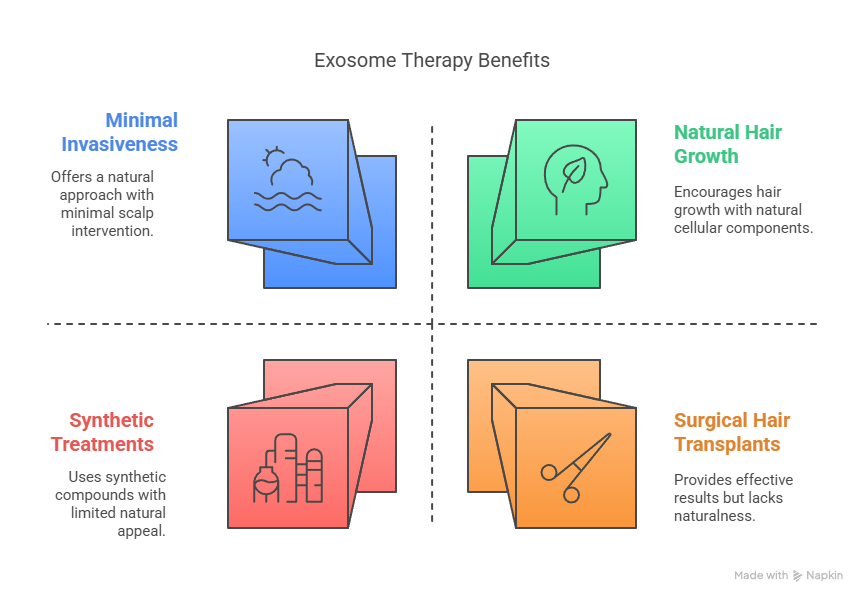
Pros of Exosome Hair Therapy
Exosome therapy has some potential advantages that make it an appealing option for some people experiencing hair loss. Here are a few key benefits:
- Potentially Effective: Initial research shows that exosome therapy may activate hair follicles and encourage new growth. While more research is needed, the initial results are promising.
- Minimally Invasive: Compared to hair transplant surgery, exosome therapy is a less invasive procedure. It typically involves injections into the scalp, which is less painful and requires less downtime.
- Natural Approach: Because exosomes come from cells, they offer a more natural alternative to synthetic treatments. This can be appealing to those who prefer natural remedies.
Cons of Exosome Hair Therapy
Like any treatment, exosome therapy also has potential drawbacks that you should consider:
- Limited Long-Term Data: Because exosome therapy is relatively new, there’s limited data on its long-term effectiveness and safety. It’s important to be aware that the results may not be permanent.
- Cost: Exosome therapy can be expensive, and it may not be covered by insurance. The cost can be a significant barrier for some people.
- Not a Guaranteed Solution: While some people experience significant hair regrowth with exosome therapy, others may not see the same results. It’s not a guaranteed solution for everyone.
It’s important to have realistic expectations about what exosome therapy can achieve. While it may help stimulate hair growth, it may not completely restore a full head of hair. A consultation with a qualified expert can help you decide if this treatment is the right fit for you.
Cost of Exosome Hair Therapy
Exosome hair therapy pricing depends on factors like clinic location, number of sessions needed, and the type of exosome product used. Generally, you can expect to pay anywhere from $3,000 to $8,000 for a full course of treatment. It’s important to discuss the cost with your provider upfront and understand what’s included in the price. Consider regenerative medicine as an alternative.
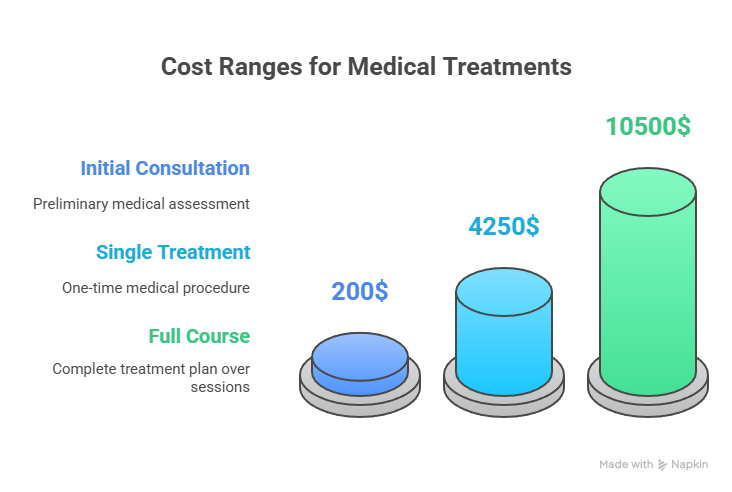
Here’s a general idea of the cost breakdown:
| Factor | Cost Range |
| Initial Consultation | $100 – $300 |
| Single Treatment | $2,000 – $6,500 |
| Full Course (2-3 sessions) | $6,000 – $15,000 |
Is Exosome Hair Therapy Right for You?
Ultimately, the decision of whether or not to pursue exosome hair therapy is a personal one. Consider your budget, your expectations, and your overall health. A licensed healthcare expert can guide you through your choices and determine if exosome treatment is a good match. Individual results can vary, so it’s important to have realistic expectations. Exosome hair therapy is a promising treatment, but it’s not a miracle cure.
Final Thoughts on Exosomes Hair Treatment
So, does exosome hair treatment really work? The answer seems to be yes, but results can vary from person to person. Some folks notice changes pretty quickly, while for others, it might take a bit longer to see those improvements. If you’re dealing with hair loss and are curious about this treatment, it could be worth looking into.
Just remember to chat with a professional who can guide you through the process and set realistic expectations. Exosome therapy shows great promise, but it’s essential to research and choose what truly fits your needs.
Frequently Asked Questions
What are exosomes and how do they help with hair growth?
Exosomes are tiny particles made by cells that help them communicate. They carry important signals and materials that can encourage hair follicles to grow and regenerate.
How is the exosome hair treatment done?
The treatment involves a consultation, followed by injections of exosomes into the scalp using fine needles. This is a simple, quick procedure with minimal discomfort for most individuals.
What results can I expect from exosome hair therapy?
Results can vary, but many people notice improvements in hair thickness and growth within a few weeks. You can usually expect to see full results between 6 and 12 months after treatment.
If you have any additional questions or if you would like to see if exosome therapy is right for you, schedule a consultation with us at Waters Edge Medical Clinic. 727-550-0855.

